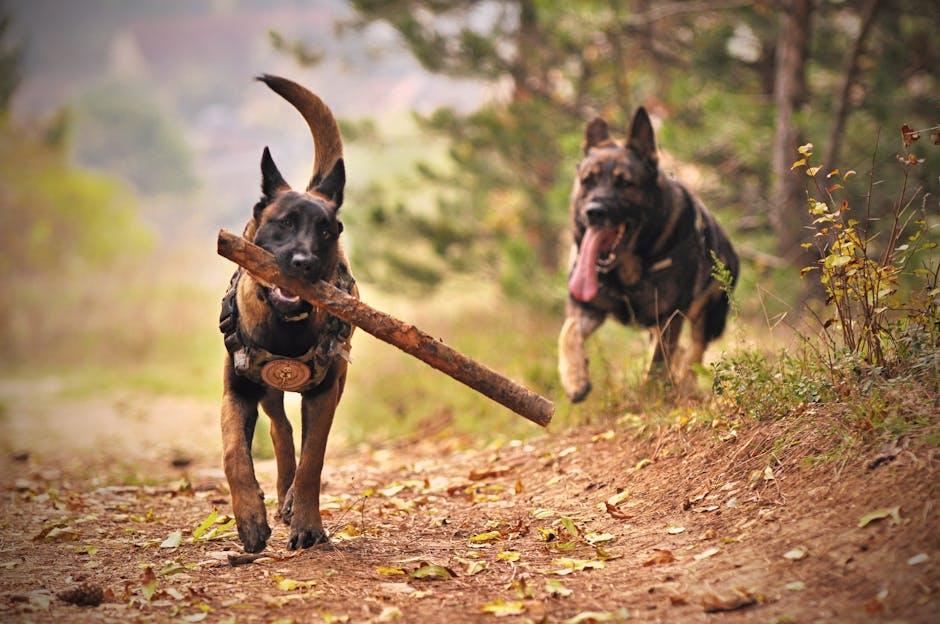How to use clicker training for complex dog commands

Clicker training has emerged as a popular and effective method for teaching dogs a variety of commands, ranging from basic obedience to more complex behaviors. This technique, rooted in the principles of positive reinforcement, utilizes a distinct clicking sound to signal to the dog that it has performed the desired action correctly, thereby encouraging repetition of that behavior. As dog owners and trainers seek to deepen their pets’ skill sets beyond simple sit and stay commands, mastering the nuances of clicker training becomes increasingly important. This article will guide you through the process of using clicker training to teach complex commands, offering step-by-step instructions, tips for success, and insights into understanding your dog’s learning pace. Whether you’re a seasoned trainer or a pet owner eager to enhance your dog’s capabilities, this guide will equip you with the tools and knowledge necessary to achieve your training goals.
Understanding the Basics of Clicker Training for Dogs
Clicker training is a popular method of dog training that uses positive reinforcement to teach your dog complex commands. This technique relies on the use of a clicker, a small handheld device that makes a distinct clicking sound, to mark desired behaviors. When paired with treats or other rewards, the clicker becomes a powerful tool to communicate with your dog. To get started, you’ll need to “charge” the clicker by clicking and immediately giving your dog a treat. Repeat this process several times until your dog associates the click with a reward. Once your dog understands this connection, you can begin using the clicker to teach more intricate commands.
- Timing is crucial: Click at the exact moment your dog performs the desired behavior.
- Consistency is key: Use the same command words and click every time your dog gets it right.
- Keep sessions short: Dogs have short attention spans, so aim for 5-10 minute training sessions.
- Gradually phase out the clicker: Once your dog consistently responds to a command, start using verbal praise and treats instead of the clicker.
By maintaining a positive and consistent training routine, your dog will learn complex commands more effectively and enjoyably. The clicker serves as a clear and immediate form of communication, helping your dog understand exactly what behavior earns a reward.

Building Complex Commands with Clicker Training
When advancing to more intricate commands, it’s crucial to understand the power of breaking down actions into smaller, teachable components. Start by identifying the end behavior you wish to achieve and then deconstruct it into a sequence of manageable steps. This approach allows your dog to learn complex commands more efficiently by building on their existing knowledge. For example, teaching your dog to fetch a specific item can be broken down into steps like locating the object, picking it up, and bringing it back to you. Use the clicker to mark and reward each successful step, gradually chaining them together until the complete command is mastered.
Incorporating contextual cues and discrimination training can also enhance your dog’s ability to perform complex commands. By associating distinct cues with specific actions, you help your dog understand exactly what is expected in different situations. Consider the following strategies:
- Contextual Cues: Introduce environmental or verbal cues that signal your dog to perform a specific sequence of actions. This might involve using a particular toy or a verbal cue like “find it” to start a search-and-retrieve task.
- Discrimination Training: Teach your dog to differentiate between similar commands by rewarding them for choosing the correct action. This can involve practicing with multiple objects and rewarding your dog only when they select the correct one based on your cue.
By consistently applying these techniques, you can effectively use clicker training to guide your dog through learning complex commands, turning challenging tasks into achievable and rewarding experiences for both you and your furry companion.

Enhancing Communication with Consistent Cues and Rewards
When embarking on the journey of teaching your dog complex commands, establishing a language of consistent cues and rewards is paramount. Clicker training serves as an effective tool in this endeavor, as it provides a clear, distinct sound that marks the exact moment your dog performs the desired behavior. This instant feedback, combined with a reward, reinforces the action and helps your dog understand what is expected. Here’s how you can make the most of clicker training for intricate commands:
- Start with Simplicity: Begin by using the clicker for basic commands your dog is already familiar with, like “sit” or “stay.” This builds a foundation of understanding the click as a positive signal.
- Break Down Complex Commands: For more advanced behaviors, break the command into smaller, manageable steps. Click and reward for each step accomplished to maintain motivation and clarity.
- Consistency is Key: Use the same cues and timing for clicks and rewards to avoid confusion. This consistency helps your dog anticipate and understand the learning process.
- Variable Rewards: Once your dog starts mastering the command, introduce variable rewards to maintain interest and engagement. This keeps the training dynamic and exciting.
Implementing these strategies with patience and persistence will enhance your dog’s ability to learn and perform complex commands efficiently. Remember, each dog learns at its own pace, so adapt your approach as needed to suit your furry friend’s individual learning style.

Troubleshooting Common Challenges in Clicker Training
As with any training method, you might encounter some hurdles along the way. Here are a few tips to help you overcome common obstacles in clicker training:
- Timing Issues: Ensure your timing is precise. The click should occur the instant your dog performs the desired action. Practice your timing without your dog to improve your reflexes.
- Inconsistent Clicking: Consistency is key. Make sure every click is followed by a treat, reinforcing the connection between the sound and the reward.
- Distractions: Start training in a quiet environment to keep your dog focused. Gradually introduce distractions as your dog becomes more proficient with the commands.
- Lack of Progress: If progress stalls, consider breaking down complex commands into smaller, more manageable steps. Reward incremental achievements to maintain motivation.
Remember, patience and persistence are your best allies. By addressing these challenges thoughtfully, you can enhance the effectiveness of your clicker training sessions.
Wrapping Up
mastering clicker training for complex dog commands is a rewarding journey that enhances the bond between you and your canine companion. By consistently applying the principles of timing, repetition, and positive reinforcement, you can effectively communicate intricate commands to your dog. Remember to be patient and adaptable, as each dog learns at its own pace. As you progress, continue to build on your dog’s successes, and don’t hesitate to revisit foundational skills when needed. With dedication and practice, clicker training can unlock new levels of understanding and cooperation, leading to a more harmonious relationship with your dog.



